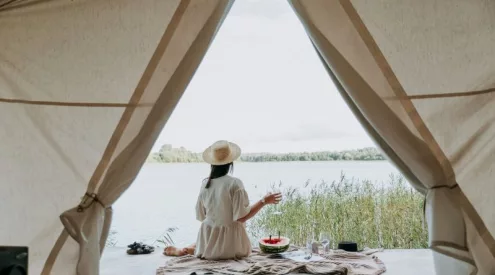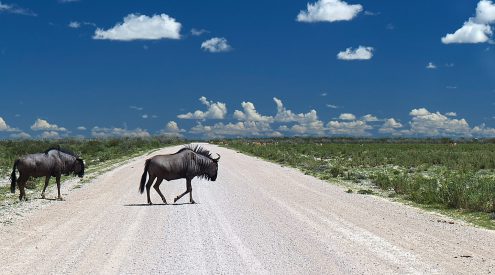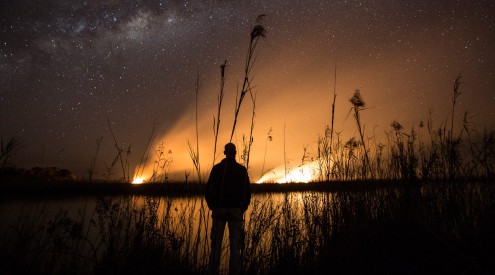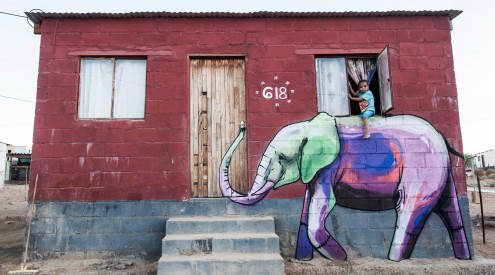Chapter two of the expedition and it’s great to be on the move again, the three expedition Land Rovers – two Discovery 4s and the big Land Rover Defender 130 mothership. Driving on the right hand side of the road, dodging trucks, pedestrians and livestock – the Landies loaded up with life-saving mosquito nets for distribution to mums with children under the age of five, Rite to Sight spectacles for the poor sighted and LifeStraws for safe drinking water. We drop down the escarpment into Africa’s Great Rift Valley – that great tear in the earth’s crust that extends from the Danakil Plains of Ethiopia on the Red Sea to below Gorongosa in Mozambique. Our first destination is Lake Ziway. It has five islands which include Debre Sina, Galila, Bird Island and Tullu Gudo, home to a monastry said to have housed the Ark of the Covenant around the ninth century. Ziway, known for its birds and hippos, is one of the eight Ethiopian Rift Valley lakes that stretch like a necklace of jewels from below Addis Ababa to the border with Kenya. As is the tradition on this expedition, we will continue to add iconic sipfills of Rift Valley water to the symbolic calabash. As always there’s that wonderful feeling, the excitement of the unknown. This southern part of Ethiopia leading down into the Omo Valley and Lake Turkana can be wild and unpredictable. Herewith the latest Great African Rift Valley dispatches:
No sex, no drinking
‘No sex, no drinking, no smoking or chewing chat’ (a narcotic leaf) reads the sign on one the island of Tullo Gudo (also known as Mount Zion) on Lake Ziway. At the sight of us Rift Valley explorers, the Coptic Monastery priests hide in the bush. They fear temptation of anything western, explains Adi, our guide. An old lady offers us traditional bread and in return we give her a life-saving net. A boat reconnects us with the Landies and we head for Shashemene, best known for its Rastafarian community, appropriately called Jamaica. Ethiopia – full of surprises.
Jamaica on the Rift
Greetings from Shashamene. Interpreter Adi explains that when Emperor Haile Selassie once visited Jamaica the heavens opened and he was seen to have broken the worst drought they had ever had. Rastafarians revere him as a saint and that’s why the Rasta area here is called Jamaica. ‘Let’s get out of here,’ calls Ross over the radio, ‘Too many hustlers, one little shit is even trying to pull the Rift Valley stickers off my vehicle.’ We continue zigzagging south. Ethiopia has its challenges.
The calabash journey continues
As we travel the Great Rift Valley we continue to distribute life-saving mosquito nets, LifeStraws and Rite to Sight spectacles, we also add sipfulls of water to the symbolic calabash. The south Ethiopian Rift Valley lakes of Ziway, Langano, Abiata, Shala, Chitu and Awasa are now behind us and we are making great progress. We set up camp on the shores of Lake Chamo: hippo, crocs, striped hyena prowl the camp at night and there is the constant cry of the fish eagle, it’s the Rift Valley at its best.
On the warpath
In thick bush near the Mago River we surprise a group of Bana tribesman armed to the teeth with AK47s. I don’t know who gets the biggest fright, them or us. Adi ascertains that they are on the warpath searching for two of their fellow tribesmen who have been captured by the warlike Mursi tribe who we are on our way to visit. Around the campfire Adi fuels our fear with stories of the barbaric Mursi. He is concerned for our safety. We bath in the river, sleep a little and are harassed by baboons in the trees.
Ready for a quick getaway
The air is charged with tension, you can cut the atmosphere with a knife. The well-armed Bana war party that we had seen earlier are sitting in a circle in the centre of the Mursi village. They are demanding the return of their comrades who have been abducted by the Mursi. With us is an armed ranger, I can sense he is jumpy. I get pulled into the circle, a carved stool is placed in the sand and I’m offered chewy bits of nyama (meat) from the coals. The young bloods finger their AK47s while the elders mumble amongst themselves. I notice that the expedition team start positioning the Land Rovers for a quick getaway.
A peace accord in the bush
We’re alive. The Bana captives are released by the Mursi. We present the elders with a goat for slaughter – it’s a ‘peace accord in the bush.’
We open up the Landies and every village mother receives a mozzie net. The Mursi women are known for making a slit beneath their lower lip, over time the gap is progressively stretched forming a lip loop which is large enough for a small circular clay plate. As the lip stretches larger plates are inserted until eventually the loop is large enough to hold a plate 15-cm in diameter and the woman can ideally pull her distended lip loop over her head. The larger the lip plate the greater her bride price – a real whopper can fetch up to 50 head of cattle. Africa’s Rift Valley is full of surprises.
In the footsteps of Count Teleki
Greetings from the rich cultural mosaic that forms the ‘badlands’ of Ethiopia’s South Omo region. It’s a wild, untamed, rugged area of Africa’s Rift Valley made up of some 30 distinct ethno-linguistic groupings, several of which number fewer than 1000 people. Inter-tribal fighting and cattle wars are common place. ‘You can buy an AK47 for two head of cattle, the guns are smuggled across from South Sudan’, says Adi.
With an armed Hamer tribal policemen as a guide, we’re attempting to follow an overgrown bush track to Lake Chew Bahir (meaning ocean of salt), first discovered by the explorer Count Teleki in 1888. As always there’s that delightful feeling of the unknown and the challenge of battling to reach another iconic geographical place on the floor of Africa’s Great Rift Valley.
We make it to the ocean of salt
The sun dips over the Hamer mountains as the three Rift Valley Expedition Landies race across the crust of Chew Bahir, the ‘ocean of salt’ that was named Lake Stefanie by Count Teleki. Up until now Lake Stefanie has been just a name on a map that we’d dreamt about reaching for years. We camp out under the stars on the vast salt crust and celebrate by syphoning some of the precious ‘Captain’s Best’ from where it lives in the jerry can on the roofrack of the big Land Rover 130 Defender. William Gwebu the expedition cook knocks up a meal of goat stew and maize meal spiced with the last of the Nando’s sauce. Tomorrow we head for the village of Turmi where Adi says he knows of a diesel smuggler who might supply us at a price. We will do Rite to Sight, LifeStraws and United Against Malaria work at small Hamer villages along the way.
The Hamer bull jumping ceremony
Blood spurts from a deep gash, one of the many that crisscross her naked back. She grunts in wide-eyed pain and then dances forward, tossing her head, spraying him with butter fat and ochre from her thick plaited hair that hangs in a fringe above her face, taunting him to whip her again. Down cracks the whipping stick – more blood.
Metal bracelets, armbands and anklets jingle as she dances forward again, her leather skirt decorated with beads and cowrie shells swings from side to side, revealing her strong shapely thighs. I wince as he raises the long thin whipping stick … crack! Even harder this time, another deep slash is added to the others. Adi tells me, that as proof of her Hamer tribal culture, she will proudly wear her horrific scars for life.
The expedition has reached a Hamer village in the South Omo area of the Great African Rift and it’s difficult to understand what’s happening around us. More girls run excitedly into the circle and the ritualistic beatings from the boys they like continue. Some girls even use a small curved metal horn to rudely blow into the young man’s ear, aggravating him enough to encourage further beatings. Alcohol and the sniffing of strong tobacco helps the girls endure the pain. Later ash will be rubbed into the deep wounds.
It’s all part of a three day Hamer tribe initiation ceremony that culminates with a naked young man having to leap up and ‘streak’ along the backs of a number of bulls and then repeat the performance several times so as to prove his manhood. If he succeeds he can take a wife, if he fails he will have to wait a year until the build up to the big rains and the next bull jumping event.
We leave the ceremony with mixed feelings and that night Adi gets hopelessly lost trying to lead us down to the Omo River – we will keep you posted.
Don’t miss out! Kingsley Holgate will be speaking in your city. Check out the 2012 dates here.

















